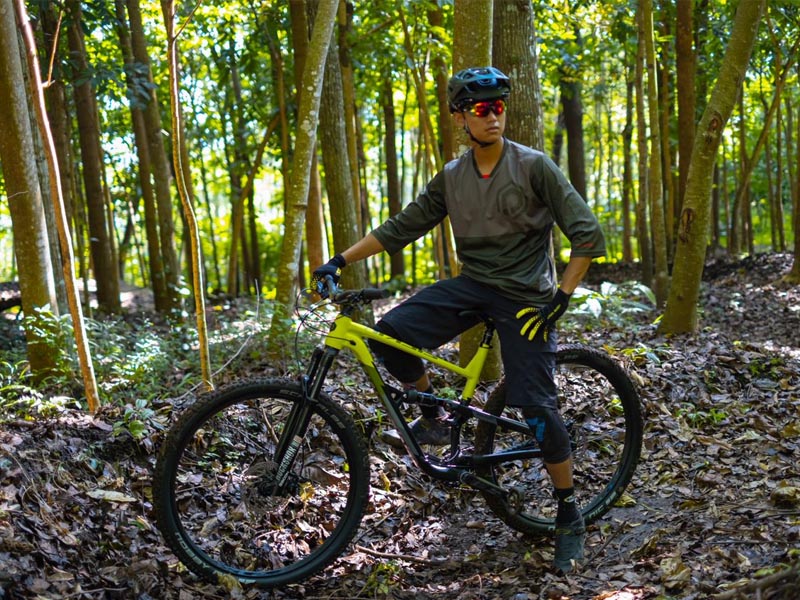Having a bicycle is not only about making a purchase and hitting the road with it. Sometimes as a bike owner, you will have to replace some parts of your bike or do maintenance. Hence, knowing the bike anatomy will save you time describing the parts you need to the employee that works in the bike shop.
So without any further introductions, here is the information you will be thankful of knowing, and have a good read!
What is Bike Anatomy?
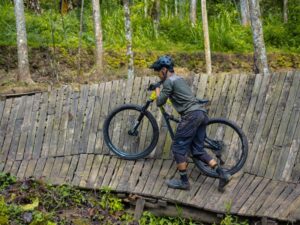
Think about the heart, brain, liver, lungs, and other crucial organs of the human body, that thing known as the human anatomy, a study of the structure of the human body. Now convert it to a bike, the name of all bicycle parts and the structure that made it a “bike” is the bike anatomy.
At a basic level, you should already know which is the bike frame, pedals, handlebars, and saddle. Now, what if your bike suddenly broke down and you need to explain the broken part of the bike to the mechanic? Sure they can do detailed checkups for you but that is going to waste a long time than you telling them what is wrong with your bike and which part needs to be replaced, right?
Therefore, you will be needing bike anatomy 101 to save you hours sitting down in the cycling workshop waiting for your bike to get the “treatment” it requires.
Mountain Bike Anatomy
Generally, mountain bike anatomy consists of the frameset, the groupset, and the wheelset. But anyway, we will be giving more detailed information on the mountain bike parts by breaking them down one by one and attaching a brief explanation, so there you go:
Frameset and Handle Parts
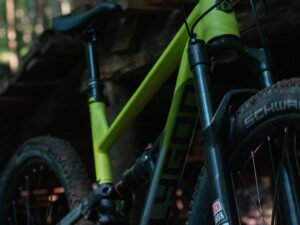
The frameset is a combination of a bike frame and fork, which include the headset and seat post. Usually, a bike manufacturer will produce a frame and fork together as a paired set. Mountain bikes usually come in a diamond shape in either hardtail types or full suspension types. For the full suspension type of mountain bike, usually, there will be an additional rear shock.
The handle parts of the bike are usually attached to the frame. The handle parts consist:
- Handlebars: the steering control of your bike linked to a pivoting front wheel through a stem which in turn attaches it to the fork;
- Handle stem: a component that connects the handlebar to the steerer tube of a bicycle fork;
- Handle grip: accessories that connect riders to the steering control of the bike.
Groupset
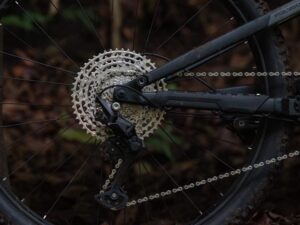
Typically, a groupset is the composition of parts that keep a bike moving. These parts consist of:
Shifters;
- Chainset;
- Cassette;
- Front and Rear Derailleurs;
- Brakes and Levers;
- Bottom Brackets;
- Chain.
The well-known groupset is one manufactured by three big companies such as Shimano, SRAM, and Tektro. A groupset usually comes in tiers. For example, the pro level of the Shimano groupset is the Shimano Dura-Ace Di2 and the basic level is Shimano Claris. A groupset often determines the price of a bike.
Wheelset
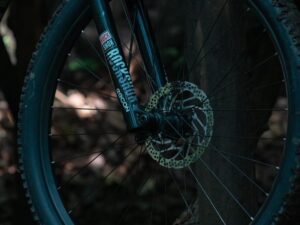
The wheelset comes in pairs, the front wheel, and the rear wheel, and consists of the tire, inner tube, a hub, spokes, rim, and the rim strip. The mountain bike wheel is described by the approximate diameter of the rim with the addition of the wide tire about 2 inches thick.
The standard mountain bike comes in four sizing as the following:
- 24-inch clincher tire with inner tubes, measurement in ISO is 507mm;
- 26-inch clincher tire with inner tubes, measurement in ISO is 559mm;
- 27.5-inch clincher tire with inner tubes, measurement in ISO is 584mm;
- 29-inch clincher tire with inner tubes, measurement in ISO is 622mm.
Folding Bike Anatomy
Each bike’s anatomy differs from the other. By means, folding bike anatomy will be different from the other types of bikes. For example, a folding bike is designed to be compact and portable, this bike’s frame is designed with a hinge that allows its owner to fold it every time needed. This hinge will not be found elsewhere except in the folding bike’s frame.
Bike Components
Understanding each important anatomy of a bike will not be complete without explaining each part of it, so here you go:
The Frame
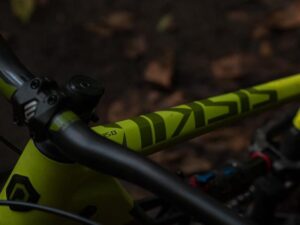
For a mountain bike, the frame can either be made of carbon fiber, aluminum alloy, or steel depending on its manufacturer and the pricing of its bike. However, for the Polygon mountain bike, majorities are manufactured in the ALX alloy, an aluminum blend that is lighter and more durable than any other same-class material in the industry.
Top Tube
Sometimes being addressed as a cross-bar, a part that connects the seat tube to the top of the head tube and runs parallel to the ground. The length of the top tube determines the position of a rider during the ride. The top tube length is measured from the top center of the head tube’s back to the center of the seat tube or seat post along an imaginary line parallel to the ground.
Down Tube
Part of the bicycle frame that connects the bottom bracket shell to the head tube. Usually, this part features mounting points for water bottle cages and other accessories. The rear derailleur cables usually run along the underside or inside of the down tube.
Seat Tube
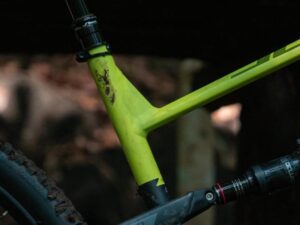
Running from the bottom bracket to the saddle and connecting the seat stay to the top tube as well as the chainstays to the down tube. The seat tube is a part where the seat post is installed, allowing riders to sit on their bike. In the mountain bike, the seat post usually comes with a dropper post which allows its rider to easily drop and then raise their saddle on the fly.
Dropper seat posts come in two types, the external routing one where the cable for the brake is entangled outside the frame, or the internal routing where the brake cable is inserted inside of the frame. Polygon bikes usually come with an internal routing dropper post that gives the bike a better stylish and neat look.
There’s also a seat post clamp that is located at the top of the seat tube on the frame and used to hold the seat post at the rider’s desired height. This part can come with a quick-release lever that allows an easy and tool-free adjustment (usually found in folding bike anatomy) and some others require a tool for tightening and loosening the clamp.
Head Tube
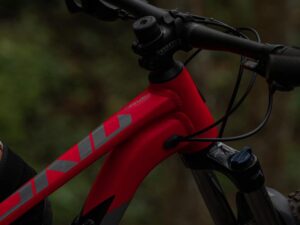
A part that houses the fork steerer tube and allows it to pivot freely on internal sets of bearings. A collection of bearings housed within the head tube is known as a headset. This part provides a smooth steering experience for the bike.
Seat Stay
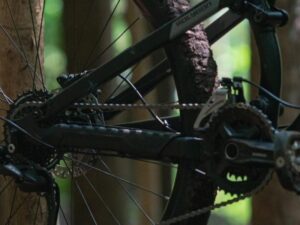
These parts run diagonally down from the top of the seat tube to the rear dropouts on either side of the rear wheel and are joined just above the wheel by a rear hub to increase the rigidity of the bike frames. In some bike designs, this bridge provides mounting points for brake calipers, fenders, or pannier racks while some others come with brake mounting points (usually a v-brake bike).
Chain stays
The chainstays in the bicycle connect the rear dropouts of the bottom bracket shell and run on either side of the wheel similar to the seat stays. Many cyclists opt to protect chain stays with a helicopter tape or chainstays protector sleeve to prevent dents and scratches on it during a ride on uneven terrain.
Fork
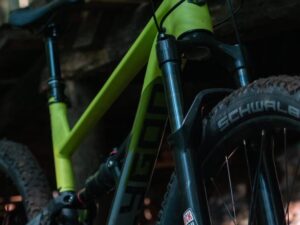
The fork is used to describe the part of a bicycle that holds the front wheel. On most mountain bikes, the fork usually contains a set of shock absorbers to give the riders a more comfortable ride and better handling of the bike.
There are several variants such as the full suspension models that provide shock absorption for both the front and rear wheel of the bike and a hardtail mountain bike where the shock absorption only deals with the raising shock on the front wheel.
Shifters

One of the key mechanisms that allow the on-the-move gear changes in mountain bikes, operates by pulling cables to move the derailleurs and forcing the chain to move onto different sprockets. An essential part for riders who like to ride on more technical terrain.
Chainset

Also known as a crankset is a large-toothed set of rings that are spun by the pedals. If you ever see the description of a bike being 1X12-speed, 2X12-speed, or 3X12-speed, the numbers 1X, 2X, and 3X are the amounts of chainring used. A mountain bike, the triple chainset has become less common.
Cassette
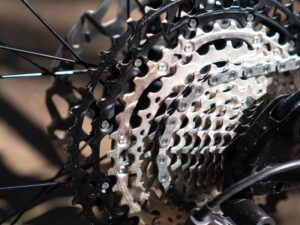
A collection of sprockets on the back wheel contains several teeth that require a different torque degree to spin the rear wheel. The number of sprockets and type of chainset is often used as a label for a bike bearing. The 2X12-speed indicates a pedal attached to a double chainring with 12 sprockets in the cassette.
Derailleurs
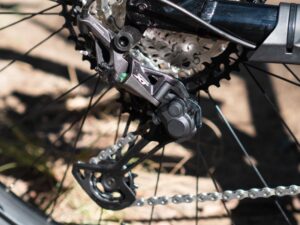
Come in two, the front derailleurs sit above the main chainring, a mechanical arm controlled by a shifter that can move a changing from one to another, and the rear derailleur that is attached to the rear bike frame and moves the chain across the rear sprockets triggered by the shifter.
Brakes and Levers
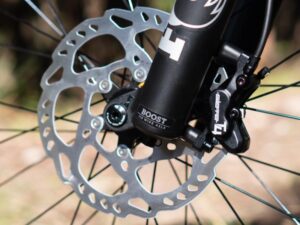
The important part is that it allows riders to slow down or even put the bike to a full stop. This part is another crucial part of a bike after a frame.
Bottom Brackets

Part of the bike where the crank arm rotates. Consist of a place that attaches the crankset known as the spindle and also bearings that allow riders to make the spindle rotate smoothly.
Chain
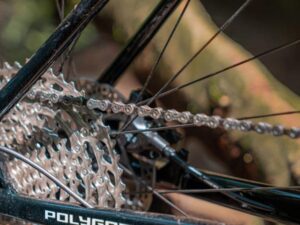
Parts that allow riders to transfer their leg powers to the rear wheel. Chain looping around the chainring in the crankset, sprockets of the cassette, and along the length of the chainstays.
Tire
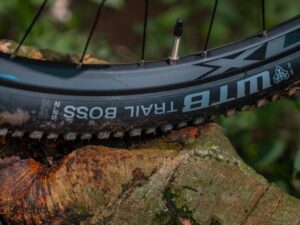
The tire is the material that directly connects the bike riders to the road. Each type of mountain bike might have used different tires depending on the terrain riders ride while a folding bike usually comes in less tread for a 20-inches wheel fit.
Conclusion
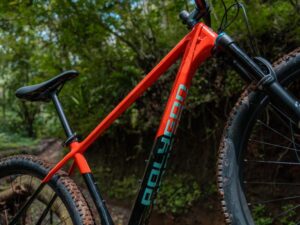
There must be one or two things in bike anatomy that are not the same as one another, allowing the riders to differentiate each bike. For example, riders will not find suspension in the road bike anatomy because it will affect the weight and performance of a road bike.
Another example is, one of the parts which differ from the cruiser bike anatomy among other bikes is the variation of frame used. A cruiser bike is usually designed in a cantilever shape frame while the road bike and mountain bike will be in a diamond shape.
If you are looking for a well-performing bike at a reasonable price, we will like you to check out Polygon road bikes and any other types of bikes from Polygon at their official distributor shop, the Rodalink.
Offering a wide range selection of bikes, accessories, parts, and apparels from renowned brands, Rodalink is a place you should visit when you want to start your cycling journey. Their bike is manufactured in high-quality materials and components with pricing being one of the most affordable within the range.
If you are purchasing from Rodalink, you will not have to worry about confusion when assembling your bike because Rodalink’s team will make sure your bike is delivered to the front of your doorstep in a ready-to-ride form. Rodalink also comes a with one-stop cycling shop so whenever you need maintenance or replacements, you can just bring your bike to Rodalink’s store on East Coast and Jurong East.
Register yourself as part of the Rodalink community and get special benefits like the special deal and being able to participate in the event especially made for the members. Collecting the points for every purchase and redeeming them as a discount voucher is also possible for members. Come and grab your dream bike at Rodalink and get joyful riding!
